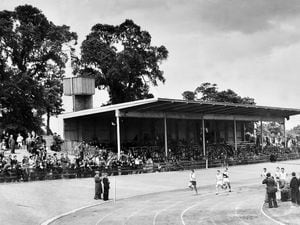History of the Wrekin's mast: A special television transmitter that caused a furore
For almost half a century, the Wrekin television transmitter has been one of Shropshire's most famous landmarks.

This week, plans were submitted to install new antennae to the transmitter to improve mobile phone signals.
But opinions were firmly divided when it was first built on the top of the famous beauty spot back in 1975. And strict planning conditions required that the station had to be carefully designed to be minimise the impact on the landscape.
The need for a new transmitter serving the West Midlands was identified in the early 1960s, ahead of the 1967 launch of BBC2 which brought colour television to the region. But the decision to build it on a popular beauty spot, complete with an Iron Age double fort, mean the BBC had to go through a long and tortuous planning process.
A leaflet produced by the BBC at the time explained how ultra-high frequency waves needed for colour broadcasting meant that any obstructions between broadcasting transmitters and TV aerials would cast shadows resulting in unsatisfactory reception.
The BBC explained that a suitable mast would need to be 1,500ft above sea level. Aside from the prohibitive cost, aircraft safety considerations would rule out the construction of a 1,500ft mast on the plain, meaning that a suitably high point needed to be found.
The BBC carried out transmission tests on the Wrekin in 1964, but was told in no uncertain terms that it would not be allowed to build on the landmark.





